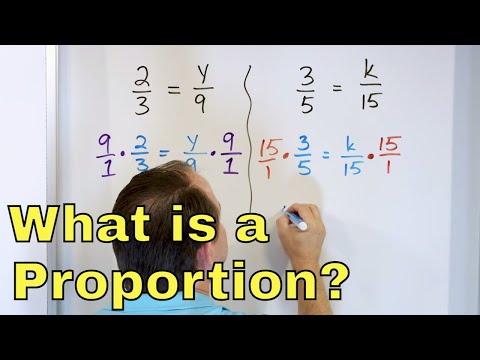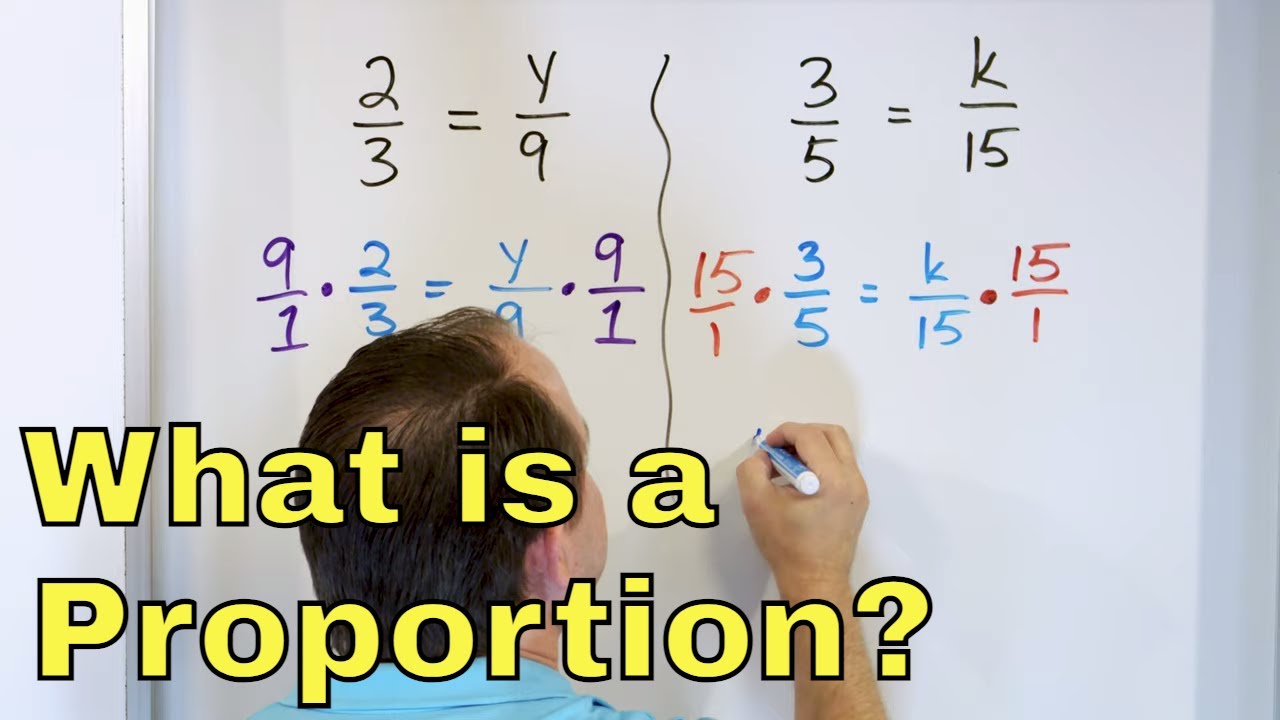A proportion in math refers to the relationship between two or more quantities that are equal. It is a fundamental concept that enables us to compare and analyze various quantities in a meaningful way. Proportions play a crucial role in many real-life scenarios, such as scaling objects, solving practical problems, and making predictions. One intriguing aspect of proportions is their ability to maintain balance and harmony. They often embody the principle of equivalence, where the relative sizes or values of different parts remain constant. This balance is visually captivating and intellectually stimulating, making proportions an engaging topic to explore. Proportions also offer a practical framework for solving mathematical problems. By setting up ratios between corresponding quantities, we can deduce unknown values or determine the relationships between different variables. This analytical approach adds a sense of intrigue and challenge to the study of proportions. Moreover, proportions have a wide range of applications in fields like science, engineering, finance, and art. From determining the concentration of a solution to creating aesthetically pleasing designs, proportions are vital in understanding the world around us. Their presence in diverse disciplines makes them relevant and versatile. In conclusion, the concept of proportions in math is captivating due to its inherent balance, practicality, and widespread application. Exploring proportions not only enhances our problem-solving skills but also deepens our understanding of the interconnectedness of various quantities. So, let’s embrace the fascinating world of proportions and unravel the secrets they hold!

Understanding Proportions in Mathematics
| Concept | Definition | Example |
|---|---|---|
| Proportion | A mathematical equation that states that two ratios are equal. | In a proportion, if we have the ratios 2:4 and 3:6, we can say that 2/4 = 3/6, which shows the proportionality between the two ratios. |
| Ratio | A comparison of two quantities by division. | If we have 5 red cars and 10 blue cars, the ratio of red cars to blue cars is 5:10 or simplified as 1:2. |
| Direct Proportion | When two quantities increase or decrease together at the same rate. | If the speed of a car doubles, the time it takes to travel a certain distance will also be halved, showing a direct proportion between speed and time. |
| Inverse Proportion | When two quantities change in opposite directions. | If the number of workers on a project is increased, the time it takes to complete the project will decrease, demonstrating an inverse proportion between the number of workers and the time taken. |
Cracking the Code of Proportions: Unraveling the World of Math
Understanding Proportions in Math
Mathematics is a subject that deals with numbers, equations, and various mathematical operations. One fundamental concept in math is proportions. Proportions play a crucial role in solving real-life problems and understanding the relationships between quantities. In this article, we will explore what a proportion is and how it is applied in mathematics.
What is a Proportion?
A proportion is a statement that two ratios or fractions are equal. It expresses the equality of two ratios, implying that the corresponding fractions have the same value. The two ratios involved in a proportion are usually separated by an equal sign (=).
Proportions can be written in different formats, such as fractions, decimals, or percentages. They are widely used in various fields, including finance, science, and engineering, to compare quantities and solve problems.
Components of a Proportion
A proportion consists of four components: two terms and two extremes. The terms are the two ratios being compared, while the extremes are the first and last terms of the proportion. The first term of a proportion is often called the antecedent, and the last term is referred to as the consequent. The relationship between these components is what makes a proportion.
For example, consider the proportion:
4/6 = 2/3
In this example, the terms are 4/6 and 2/3, while 4/6 is the antecedent, and 2/3 is the consequent.
Solving Proportions
Solving proportions involves finding the missing value in one of the terms. To solve a proportion, you need to cross-multiply and then solve the resulting equation.
Let’s take an example to illustrate the process:
3/5 = x/15
To solve this proportion, we cross-multiply:
3 * 15 = 5 * x
After simplifying the equation, we get:
45 = 5x
Finally, we divide both sides of the equation by 5 to solve for x:
45/5 = x
x = 9
Therefore, the missing value in the proportion is 9.
Applications of Proportions
Proportions have numerous applications in real-life situations. They are commonly used to solve problems involving ratios, rates, and scaling.
1. Cooking and Recipes: Proportions are essential in cooking and baking, where ingredients need to be measured accurately. Recipes often provide ingredient proportions to ensure the right balance of flavors and textures.
2. Scale Models: Architects and engineers use proportions to create scale models of buildings, bridges, and other structures. These models accurately represent the dimensions of the actual structures, but in a smaller, more manageable size.
3. Maps: Maps and navigation systems rely on proportions to represent distances accurately. The scale of a map determines the relationship between the distances on the map and the corresponding distances in the real world.
4. Finance and Business: Proportions are often used in finance and business to calculate interest rates, discounts, and profit margins. These calculations help individuals and businesses make informed financial decisions.
5. Medical Dosages: Proportions are crucial in medical dosages, where the correct ratio of medication to patient weight is essential. Doctors and pharmacists use proportions to determine the appropriate dosage for a particular patient.
Conclusion
In conclusion, proportions are an integral part of mathematics and have widespread applications in various fields. They provide a way to compare and relate quantities, making them essential in solving real-life problems. By understanding the components of a proportion and learning how to solve them, you can apply this fundamental concept to a wide range of mathematical and practical situations.

